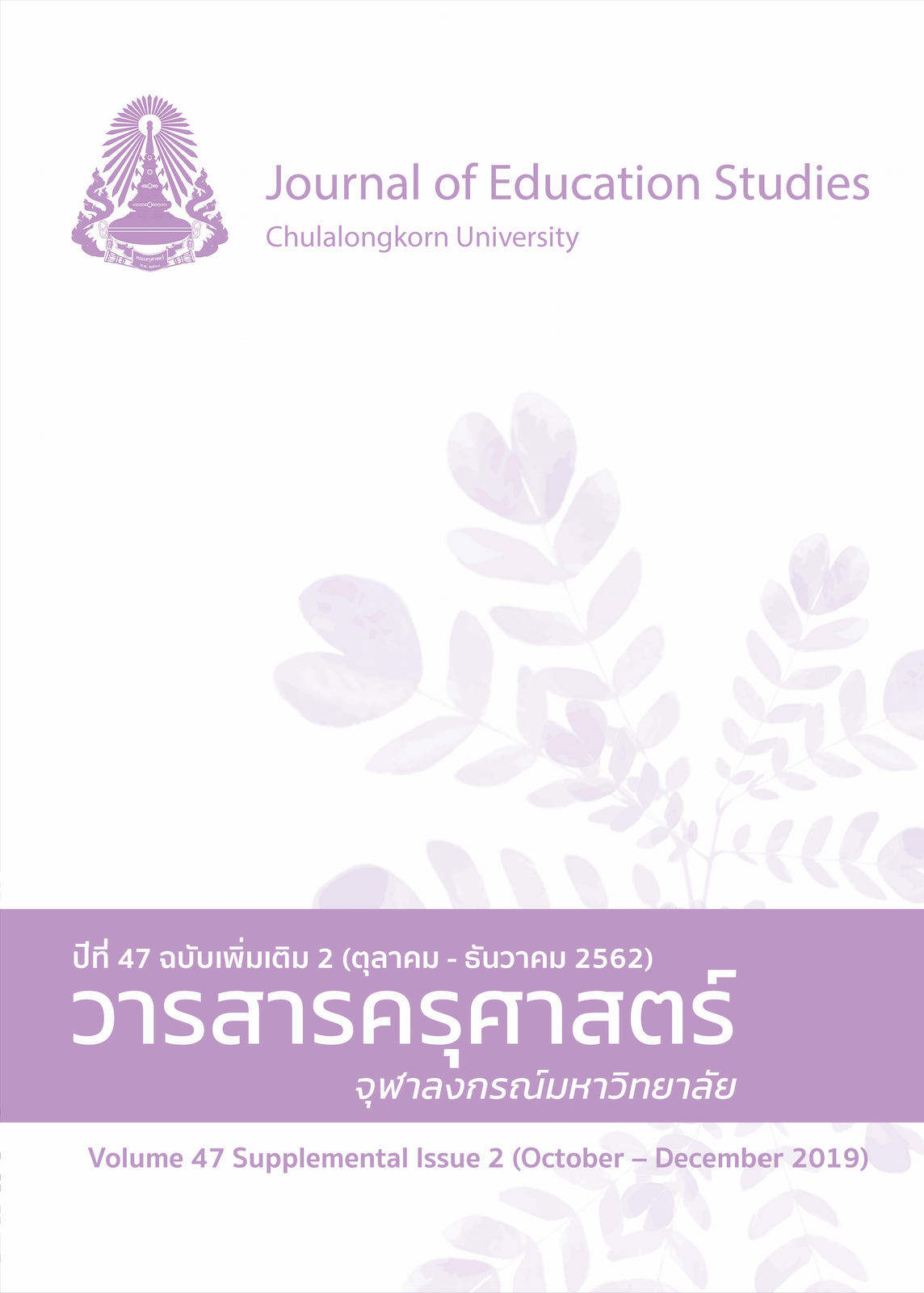Resilience in the Preschooler Classroom
Keywords:
RESILIENCE, PROMOTING RESILIENCE, PRESCHOOLER’S CLASSROOMAbstract
The focus of this article is the importance of resilience for preschoolers, which is an important quality for human life to help young children live happy lives. Children with a resilient shield will be able to handle problems by using appropriate social and emotion skills and problem solving abilities to help them overcome obstacles. Preschooler teachers play a role in promoting resilience in children at this age; thus, they should follow important guidelines of teachers to promote resilience in the classrooms including (1) creating a learning atmosphere in the classroom consisting of an environment that encourages children to feel secure, safe, confidence, self-esteem and trustful, as feelings are an important part of the classroom and vital to having good interaction with others; and, (2) learning management is an activity or experience that enhances social skills and emotional management of children through play and various actions, create positive values, and thus encourages children to have new experiences, real self-awareness, awareness of positive and negative impacts, create an agreement and strive to comply with established agreements, and obtain skills to deal with various challenges.
References
กระทรวงศึกษาธิการ. (2560). หลักสูตรการศึกษาปฐมวัย พุทธศักราช 2560. กรุงเทพมหานคร: โรงพิมพ์ชุมนุมสหกรณ์การเกษตรแห่งประเทศไทย.
กลุ่มสนับสนุนวิชาการและการวิจัย สำนักส่งเสริมสุขภาพ กรมอนามัย. (2561). รายงานการศึกษาปัจจัยที่มีผลต่อพัฒนาการเด็กปฐมวัยไทย ครั้งที่ 6 พ.ศ. 2560. สืบค้นจาก http://hp.anamai.moph.go.th/download/article/article_20190225123524.pdf
สมพร อินทร์แก้ว และ คณะ. (2552). เปลี่ยนร้ายกลายเป็นดี พลังสุขภาพจิต RQ: Resilience Quotient. นนทบุรี: ดีน่าดู.
สำนักงานคณะกรรมการการศึกษาขั้นพื้นฐาน กระทรวงศึกษาธิการ. (2561). คู่มือหลักสูตรการศึกษาปฐมวัย พุทธศักราช 2560 (สำหรับเด็กอายุ 3-6 ปี). สืบค้นจาก https://drive.google.com/file/d/1757i0bmRZLC0UBAX3lwQU3yVB6yhly1O/view
อภิพร เป็งปิง และ ศศิลักษณ์ ขยันกิจ. (2562). การนำเสนอกรอบแนวคิดบทบาทครูในการส่งเสริมความเข้มแข็งทางจิตใจของเด็กวัยอนุบาล. วารสารอิเล็กทรอนิกส์ทางการศึกษา (OJED), 14(2), 1-12. สืบค้นจาก https://www.tci-thaijo.org/index.php/OJED/article/view/184416/144214
องค์การยูนิเซฟ. (2560). เด็กทุกคนสำคัญเสมอ ข้อมูลที่น่าสนใจจากการสำรวจสถานการณ์เด็กและสตรีในประเทศไทย พ.ศ. 2558-2559. กรุงเทพมหานคร: องค์การยูนิเซฟ.
ภาษาอังกฤษ
Bernard, B. (1993). Fostering resiliency in kids. Educational Leadership, 51(3), 44-48.
Bernard, B. (1995). Fostering resilience in children. Retrieved from https://files.eric.ed.gov/fulltext/ED386327.pdf
Collet, V. S. (2017). “I can do that” creating classroom that foster resilience. Young Children, 72(1), 23-32.
Gartrell, D., & Cairone, K. B. (2014). Fostering resilience teaching social-emotion skills. Young Children, 69(3), 92-93.
Gibson, A., & Gibson, N. (2016). Human growth, behavior and development essential theory and application in social work. London: SAGE.
Gilligan, R. (2009). Adversity, resilience and young people: The protective value of positive school and spare time experiences. Children & Society, 14(1), 37-47.
Ginsburg, K. R., & Jablow, M. M. (2014). Building resilience in children and teens giving roots and wings. Illinois: American academy of pediatrics.
Goleman, D. (1998). Working with emotional intelligence. New York: Bamtam.
Grothberg, H. E. (1995). A guide to promoting resilience in children: Strengthening the human spirit. The Hague, Netherlands: Bernard Van Lee Foundation.
Masten, A. S., Gewirtz, A. H., & Sapienza, J. K. (2013). Resilience in development: The importance of early childhood. Retrieved from https://conservancy.umn.edu/bitstream/handle/11299/53904/Resilience?sequence=1
Nolan, A., Stagnitti, K., Taket, A., & Casey, S. (2015). Supporting resilience. In S. Carvis, & D. Pendergast (Eds.), Health and wellbeing in childhood (pp. 240-252). Cambridge: Cambridge University Press.
Petty, K. (2014). Ten ways to foster resilience in young children-teaching kids to “bounce back”. Dimensions of Early Childhood, 42(3), 35-39.
Pizzolongo, P. J., & Hunter, A. (2011). I am safe and secure promoting resilience in young children. Young Children, 66(2), 67-69.
Pound, L. (2005). How to children learn: From Montessori to Vygotsky-education theories and approaches made easy. UK: Andrews UK Limited.




